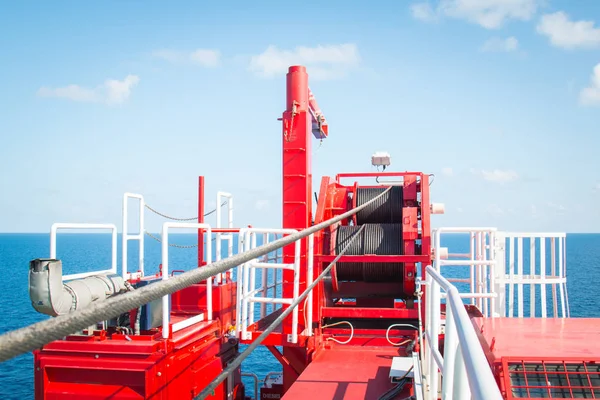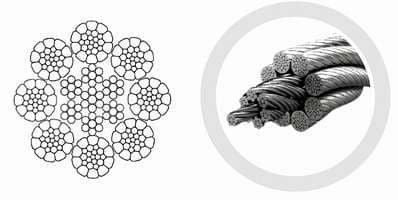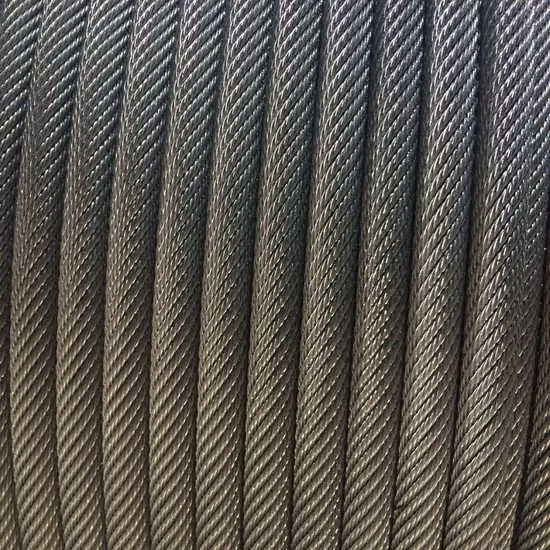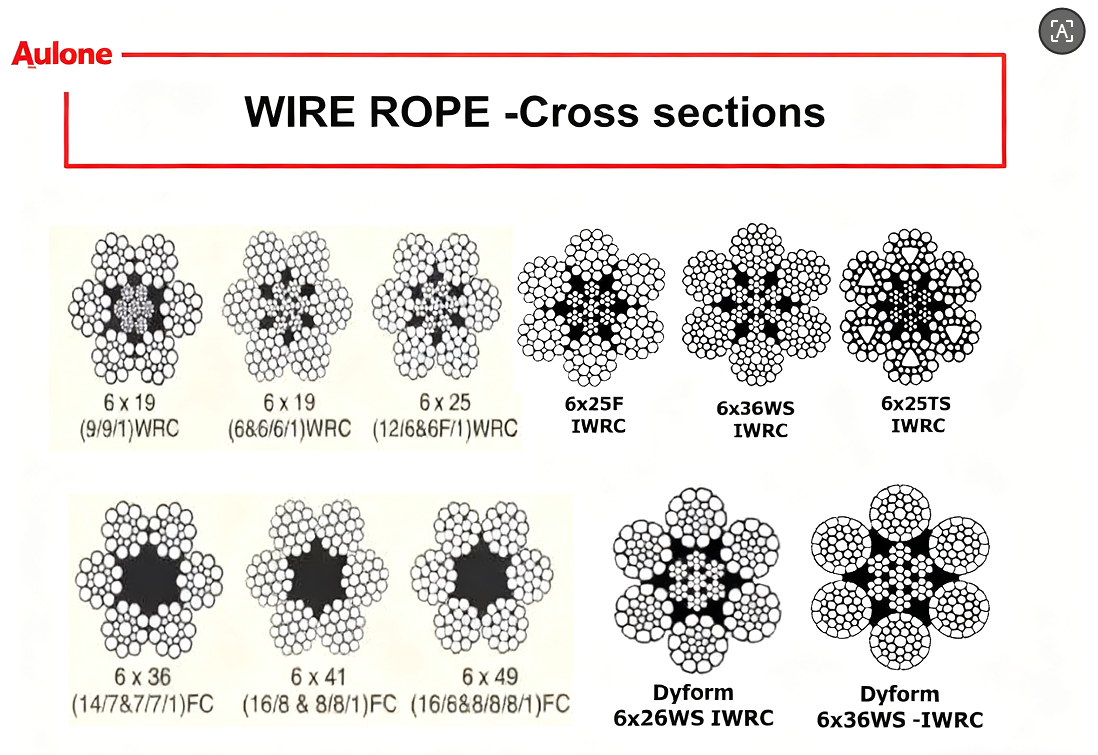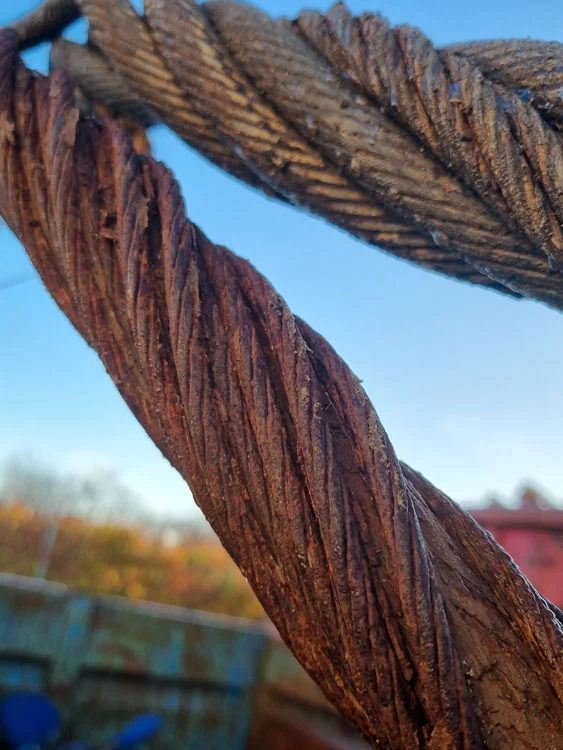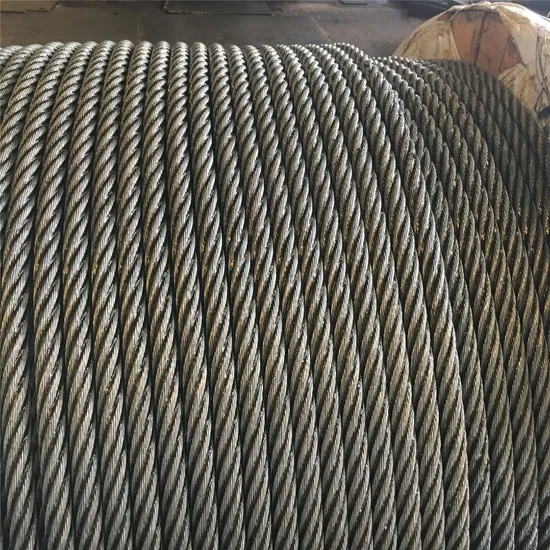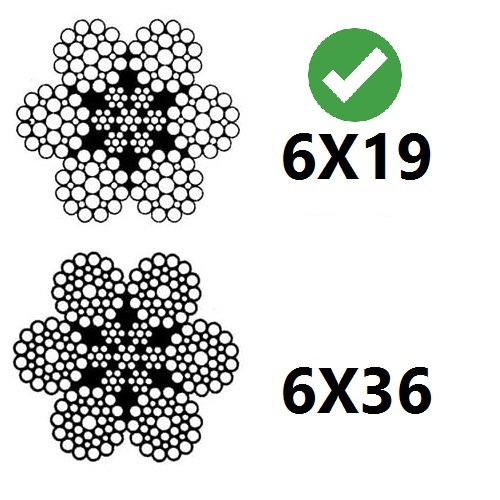
Does choosing the right wire rope feel confusing? Many options are available, and selecting the best one is crucial. Making the wrong choice can lead to big problems.
The 6×19 class wire rope has smaller, fewer wires per strand, offering good abrasion resistance. The 6×36 class, with more, finer wires per strand, provides greater flexibility.
I’ve been in this industry for years, helping businesses like yours. I’ve seen firsthand how important it is to pick the perfect wire rope. Let me share what I’ve learned.
Why should you choose 6×19 class wire ropes for specific applications?
Choosing the right wire rope matters for safety and performance. The 6×19 class is a popular choice for many jobs. It has unique features that make it suitable for certain tasks.
The 6×19 class wire ropes are best for applications needing good abrasion resistance and moderate flexibility, such as general hoisting or rigging tasks.
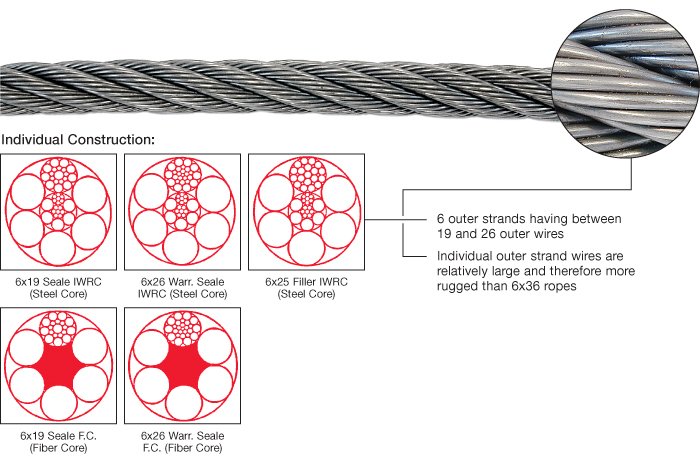
When I talk to my customers, they often ask about durability. One time, a client from Singapore needed wire ropes for a port crane. They wanted something tough that could withstand constant use. The 6×19 class was the perfect fit. Its construction provides excellent resistance against wear and tear. This means it holds up well when rubbing against other surfaces.
Construction and Characteristics of 6×19 Class Wire Rope
The name “6×19” tells you about its construction. It has six strands, and each strand has 19 wires. This specific setup gives the rope its strength and features.
Here are some key characteristics:
| Feature | Description | Benefit |
|---|---|---|
| Wire Count | 19 wires per strand | Good balance of strength and flexibility |
| Abrasion Resist | High due to larger outer wires | Longer lifespan in abrasive environments |
| Flexibility | Moderate, less flexible than 6×36 class | Suitable for moderate bend radii |
| Applications | Often used for general hoisting, mining, and cranes | Versatile for many industrial lifting tasks |
Its design makes it dependable. The outer wires are typically larger. This helps them resist being worn down. For projects where you need a strong, sturdy rope, 6×19 is a good option. I always recommend considering the environment where the rope will be used. Dirty or rough conditions often favor the 6×19 class.
Common Applications of 6×19 Class Wire Rope
The 6×19 class wire rope is a workhorse in many industries. It is highly versatile.
Here are some common applications:
- Cranes: From mobile cranes to overhead ones, 6×19 is a staple. It handles lifting heavy loads reliably.
- Hoisting: Used in construction and industrial settings for lifting and lowering materials.
- Mining: Resists abrasion well in harsh mining environments.
- Drilling Lines: Provides the necessary strength and resistance for drilling operations.
- Marine Applications: Though specific marine ropes exist, 6×19 can be used for various tasks on ships or docks.
I remember a client in Saudi Arabia who needed a robust wire rope for their construction site. They were dealing with heavy concrete slabs. The 6×19 class performed exceptionally, proving its reliability under tough conditions. It consistently delivers high breaking loads, ensuring safety. We can also provide certificates like BV & CE or DNV if needed. This ensures our ropes meet strict quality standards.
When is 6×36 class wire rope the better choice for demanding operations?
Some jobs need more than just strength. They need flexibility. This is where the 6×36 class wire rope shines. It’s built differently to meet those specific needs.
The 6×36 class wire ropes are ideal for applications requiring high flexibility and fatigue resistance, such as crane hoist lines with smaller drum diameters.
I often get questions about ropes that need to bend a lot without breaking. A few years ago, a customer from Vietnam had issues with short rope lifespans. Their machinery had smaller sheaves. After discussing, we found the 6×36 class was the solution. Its design handles repeated bending cycles better.
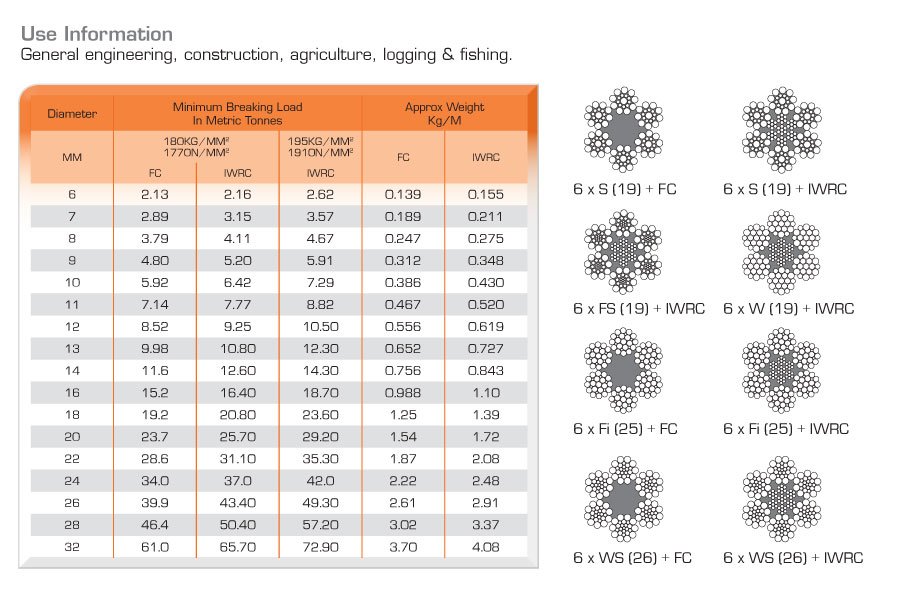
Construction and Characteristics of 6×36 Class Wire Rope
The “6×36” means it also has six strands. But each strand has 36 wires. These wires are finer than those in 6×19 ropes. This makes the rope much more flexible.
Here are some key characteristics:
| Feature | Description | Benefit |
|---|---|---|
| Wire Count | 36 wires per strand | High flexibility, better fatigue resistance |
| Abrasion Resist | Moderate, less than 6×19 due to finer wires | Wires can be more prone to surface wear |
| Flexibility | High, ideal for small sheave/drum diameters | Reduces stress from bending, longer life |
| Applications | Ideal for crane hoist lines, elevator ropes, rigging | Suited for dynamic, bending-heavy tasks |
This construction makes the 6×36 class excellent for dynamic applications. If your equipment involves winding and unwinding ropes frequently, 6×36 will perform better. It withstands bending stress more effectively. We sometimes make ropes with plastic impregnation. This helps protect the core and adds to the rope’s life.
Common Applications of 6×36 Class Wire Rope
The flexibility of 6×36 class wire ropes makes them suitable for many specific uses. Often, these are critical lifting tasks.
Here are some common applications:
- Crane Hoist Ropes: Especially on cranes with smaller drums or sheaves, where flexibility is key to preventing premature fatigue.
- Elevator Ropes: Used in elevators because they need to bend continuously over sheaves.
- Drilling Ropes: Provides flexibility for deep drilling operations.
- General Purpose Applications: When flexibility is prioritized over extreme abrasion resistance.
- Specialized Assemblies: We often use 6×36 class for custom assemblies due to its adaptability.
I recently supplied 6×36 ropes to a large corporation in Russia. They needed ropes for specialized rigging that involved complex bending. The 6×36 class delivered high performance. It also met their tough quality control needs. Our factory has four production lines. This means we can handle large orders quickly. We also offer customizable logos.
How do you choose between 6×19 and 6×36 class wire ropes?
Choosing between 6×19 and 6×36 depends on the specific job. There are key factors to consider for optimal performance and safety. Making the right choice means understanding the differences.
Choosing between 6×19 and 6×36 class wire ropes depends on balancing abrasion resistance and flexibility requirements for the application.
When customers ask, I always start by understanding their operating conditions. For example, a buyer from Canada recently was unsure. I explained the variables they needed to think about.
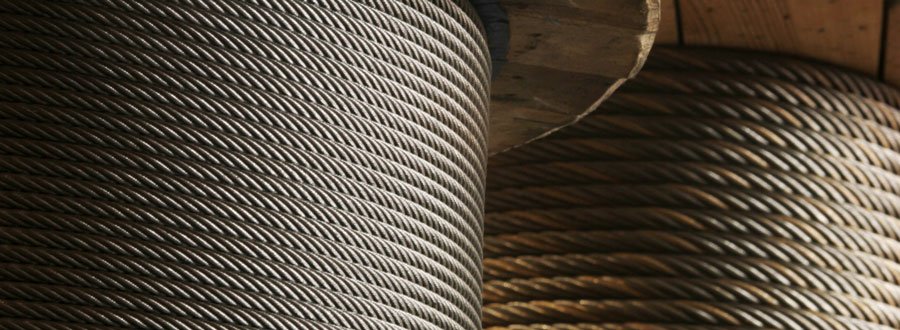
Key Factors in Selection
Several factors influence the best choice. Consider these points carefully:
- Abrasion vs. Flexibility: If the rope will rub against rough surfaces, 6×19 is often better due to its larger outer wires. If the rope will bend frequently over small sheaves or drums, 6×36 is superior because its fine wires allow more flexibility.
- Sheave and Drum Diameter: Smaller diameters require more flexible ropes (6×36). Larger diameters can use less flexible ropes (6×19).
- Fatigue Resistance: For applications with constant bending and flexing, 6×36 has better fatigue resistance.
- Breaking Strength: Both classes offer high breaking strength. However, the specific construction and material will determine the exact breaking load. My team produces ropes with high tensile strength and high breaking loads.
- Environment: Corrosive environments might require galvanized or stainless steel options, which are available for both classes.
For complex projects, like those for mining companies, we look at the specific machinery. For example, a client from Indonesia needed ropes for their mining equipment. We chose a 6×19 class rope because of the abrasive conditions. It was the best solution.
Compliance and Certifications
Regardless of the class, compliance with industry standards is vital. Our ropes meet EN12385-4 standards. This ensures they are safe and reliable.
Here are some certifications we can provide:
- BV (Bureau Veritas)
- CE (Conformité Européenne)
- RMRS (Russian Maritime Register of Shipping)
- DNV (Det Norske Veritas)
- ABS (American Bureau of Shipping)
My commitment is to provide high-quality products. We ensure all specifications are met. This gives our clients peace of mind. We export to many countries, including the UAE, Russia, and Australia. Our experience with various international standards helps us serve a global market.
Conclusion
Both 6×19 and 6×36 class wire ropes are vital. Each offers specific benefits for different applications, balancing abrasion resistance and flexibility. Choose wisely for optimal performance.

